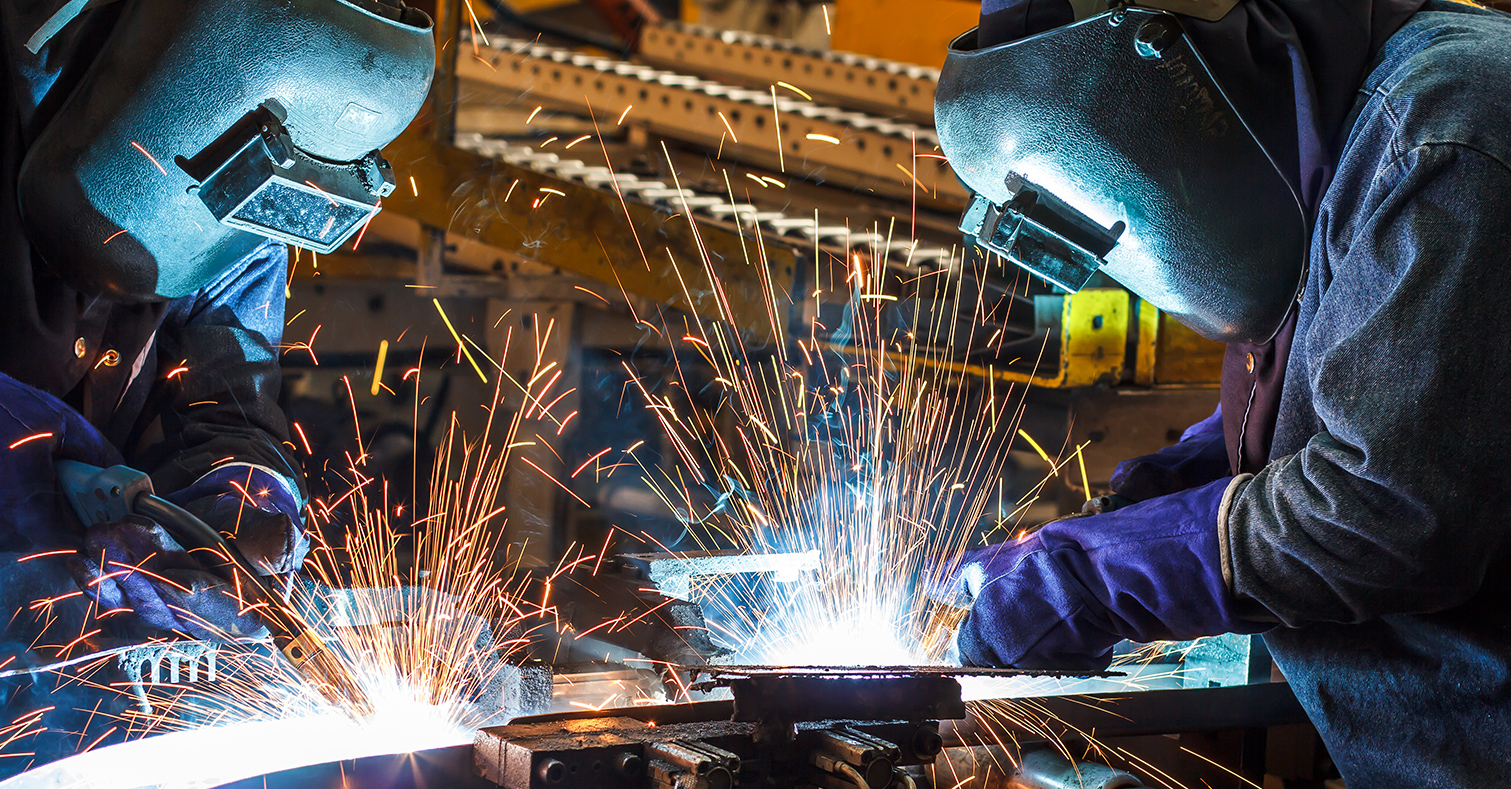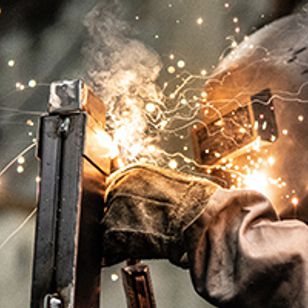Get Real Manufacturing OEE Improvement with Modular Air Filtration
If you conducted an OEE analysis today, would your manufacturing processes pass muster? Or would your overall equipment effectiveness results show wasted downtime on activities like material handling, rearranging shop floors for moving large units, and filter changes on permanent clean air enclosures?
Housekeeping activities like these are often viewed as necessary evils to maintain product quality and ensure worker safety during messy and fume-producing processes like welding, sanding, grinding, coating, or painting. If you currently rely on permanent clean rooms and designated spray booths to safely perform these tasks, you’re likely dealing with downstream processing delays due to inefficient air filtration systems.
Unplanned downtime often results from:
- Taking valuable man hours to change overhead filters
- Delaying precision assembly or inspections to clean dust dislodged from overhead filter changes
- Retesting to ensure the indoor air quality (IAQ) meets certification requirements before resuming production
But with modular air filtration, you can bring retractable, clean air enclosures to each workpiece without these workflow disruptions. With easily accessible filter units adjacent to each enclosure, the filter change process is simplified, taking only the amount of time required to remove the old filter and insert the new one. And if you’re really trying to up your OEE game, modular indoor air filtration is a cost-effective solution for avoiding even more serious bottom-line threats.
Here are some typical indoor industrial challenges that modular air filtration can help you address – without scrambling your OEE calculations.
Regulatory Watchdog Fines
From CNC machining to robotic welding to cellular coating and painting, manufacturing processes release a wide array of toxins, including hexavalent chromium (VOCs), manganese, nickel, and zinc, as well as argon, nitrogen, carbon dioxide, carbon monoxide, and hydrogen fluoride gases. Failure to mitigate these hazards can expose your operations to regulatory fines or even costly litigation, not to mention the downtime to deal with the resulting red tape.
Portable air filtration can help you dot every regulatory “i” and cross every “t,” including:
- EPA requirements for spray finishing
- OSHA regulations for potentially combustible dust, spray operations, and other indoor construction projects
- U.S. and Canada UL standards for measuring and validating performance, environmental health, and sustainability
- NFPA standards for dry chemical extinguishing systems and spray applications using flammable or combustible materials
- Plus state and local regulatory requirements surrounding indoor air quality
Cellular Manufacturing Disruptions
Automotive, aerospace, marine, and military manufacturers rely on cellular processes that require short-term production tasks while waiting on long-term constructions. Retractable, clean air enclosures can streamline cellular production by focusing contamination control when and where it’s needed, for reduced processing time and improved part quality.
Clean air is brought to each workpiece, producing OEE bottom-line benefits such as:
- Reconfiguring easily to suit changing product requirements and on-the-fly scheduling adjustments
- Providing crane access and reducing the need to move large pieces for sanding, blasting, painting, or other finishing processes
- Minimizing the transport distance between successive steps in one-piece flows
- Reducing handling, queuing time, and waste, while improving employee productivity and workpiece visibility
- Enabling multiple operations within a clean air enclosure and allowing for easy filter swap out and cleaning between processes
Equipment and Machining Risks
CNC machining and other metal forming tasks can produce dust particles and oil mist that can settle into your expensive robotics and inflict significant wear and tear on your equipment. In high enough concentrations, dust can even become combustible, putting your entire facility at risk.
Modular air filtration reduces these OEE risks by:
- Working with existing manufacturing cells to contain and capturing dust at its source
- Isolating your valuable equipment in a clean air envelope, so equipment is impervious to dust and mist particulates
- Capturing mist and storing collected oil or other fluids for reuse or disposal
- Containing air particulates and gaseous contaminants that can compromise machinery sensors, circuits, and fans
- Reducing the time needed to perform machine maintenance and increasing equipment lifespans
Lean Efficiency Killers
Adhering to Lean best practices while shielding employees from dangerous airborne hazards is no easy task. Designated clean rooms and high-maintenance HVAC systems take up valuable floor space and waste man hours and resources.
Modular air filtration can solve such Lean-killing challenges by:
- Eliminating costly air makeup, excessive HVAC filter changes, and disruptions to one-piece flows
- Preventing workflow bottlenecks from dust contamination that can cause surface prep and coating rework
- Saving production time and man hours from moving large workpieces to specific manufacturing cells for sanding and coating
- Protecting electronics and other valuable equipment from the corrosive fine layers of soot, dust, and oil film
- Keeping dry clean air inside each work area and damaging contaminants outside for faster coating and painting processes
Safety Hazards
If a worker becomes injured or sick due to airborne hazards, your production can come to a grinding halt. OEE begins with protecting your facility’s most valuable assets – your employees. PPE offers some protection, but doesn’t sufficiently mitigate all air contaminants that cause illness-related absences and rampant turnover.
Flexible, clean air enclosures can shield your workers from machining, welding, sanding, coating, and painting health risks such as:
- COPD
- Silicosis
- Lung cancer
- Metal fume fever
- Kidney damage
- Stomach ulcers
- Respiratory ailments (bronchitis, asthma, etc.)
Eliminate OEE Roadblocks with Modular Industrial Air Filtration
Eliminating airborne hazard induced delays and downtime is key to achieving true OEE. Modular industrial air filtration is designed to help you meet these challenges head-on and can be set up to safeguard your employees and your processes in just days, sometimes hours.
Combining retractable enclosures with vented and non-vented filtration, Duroair engineers custom clean air solutions that work with both existing floor spaces and cellular processes to streamline operational efficiency. We can provide flexible, cost-effective contamination control when and where you need it.
To learn how we can engineer a clean air solution to help you achieve true OEE improvement, contact us today.

